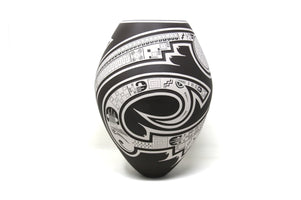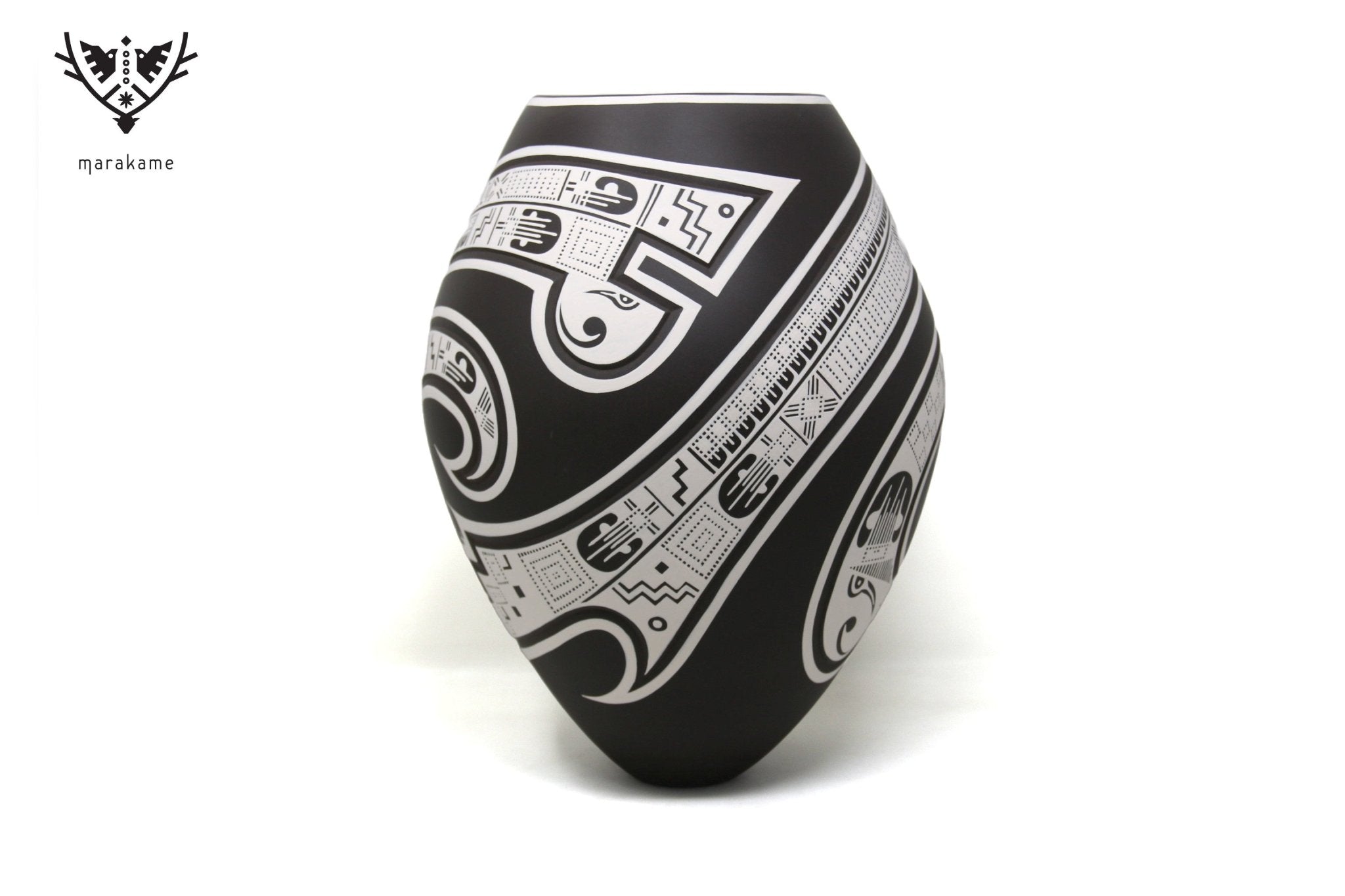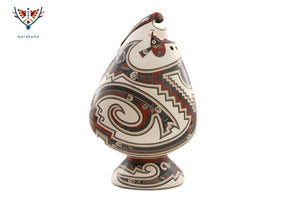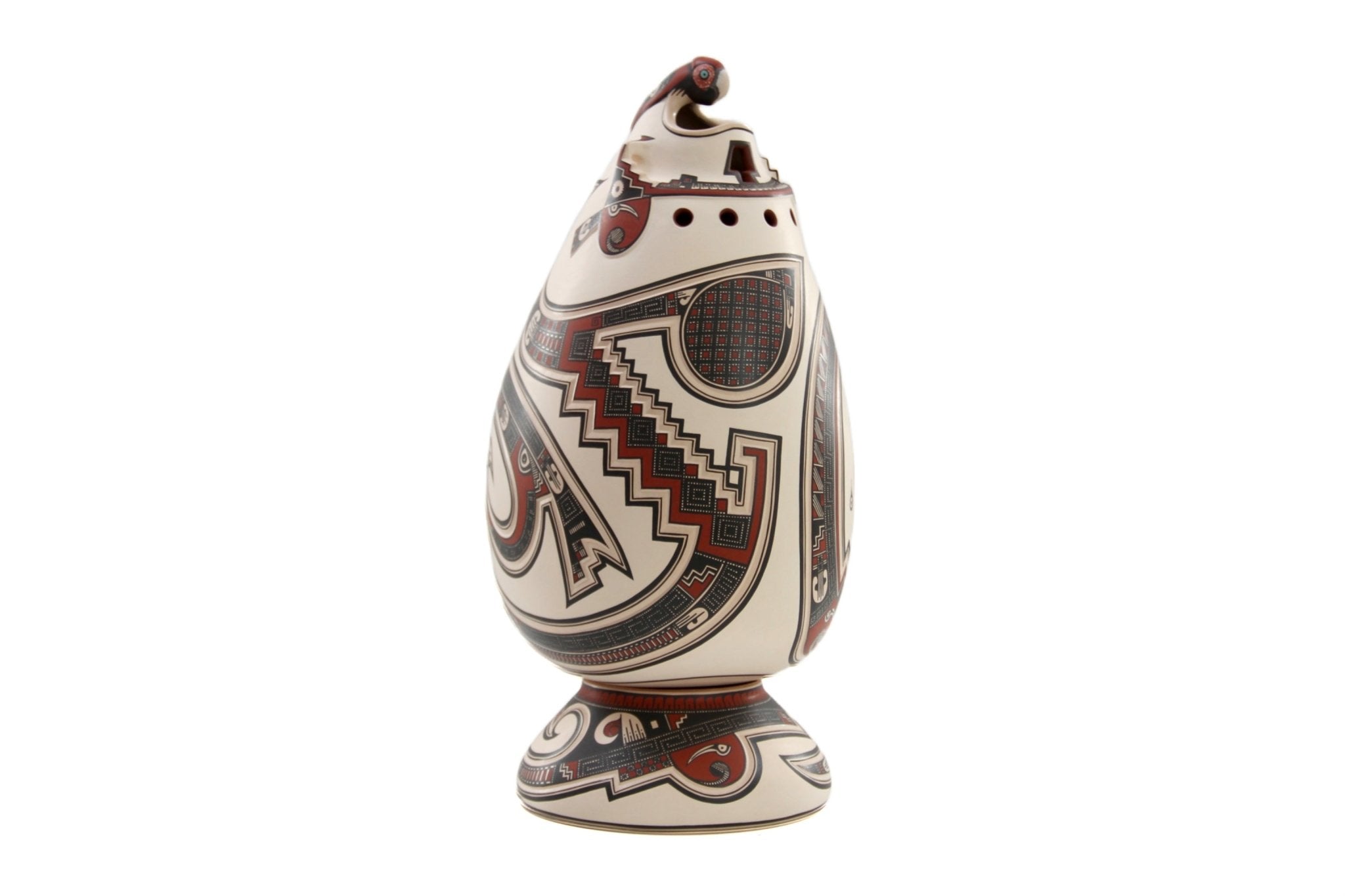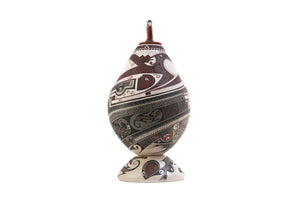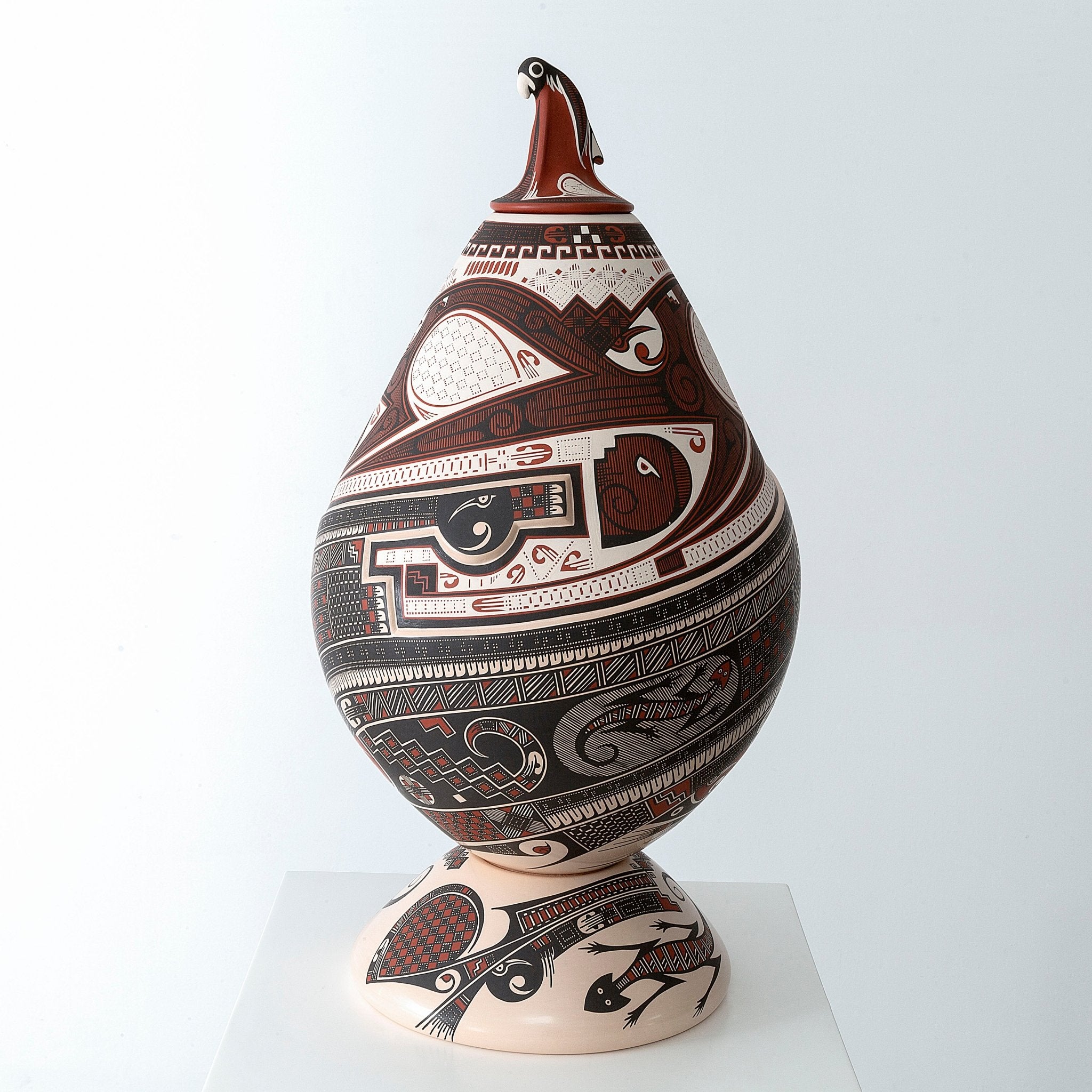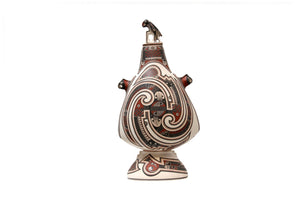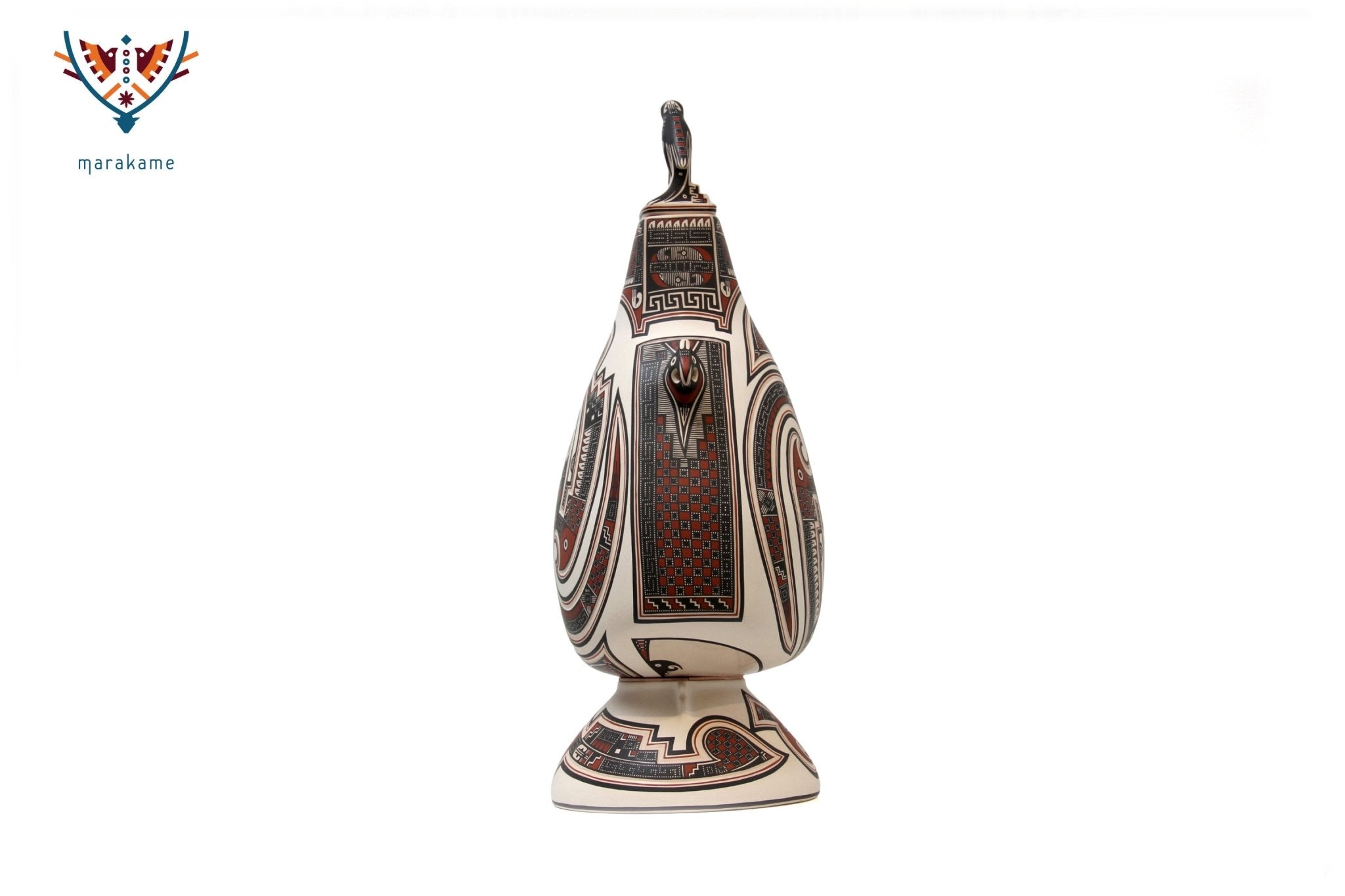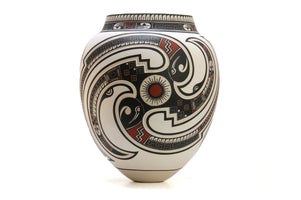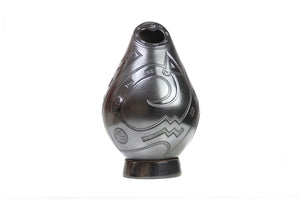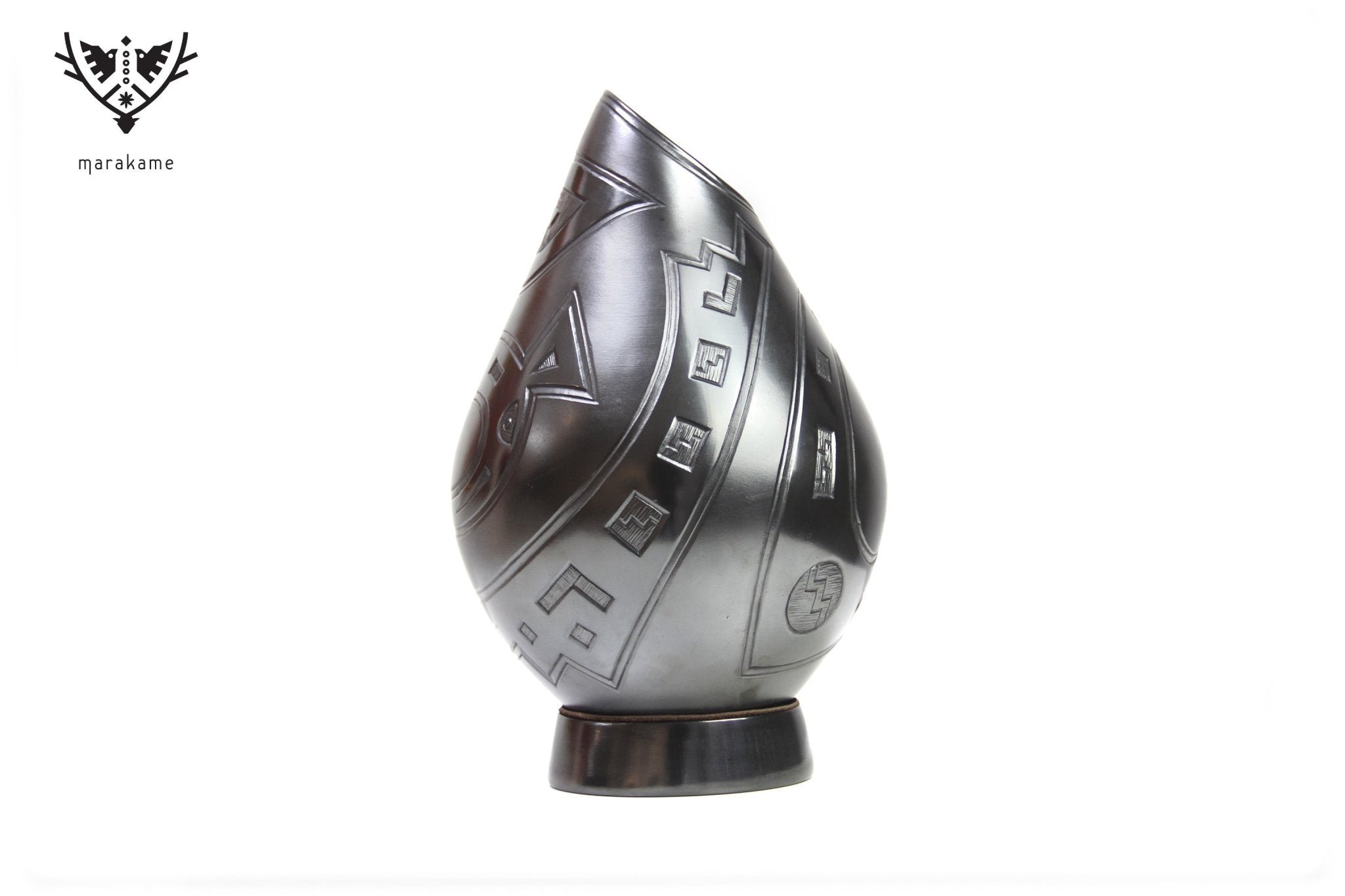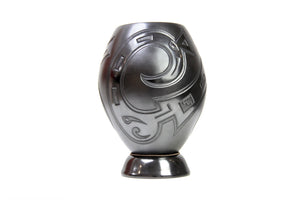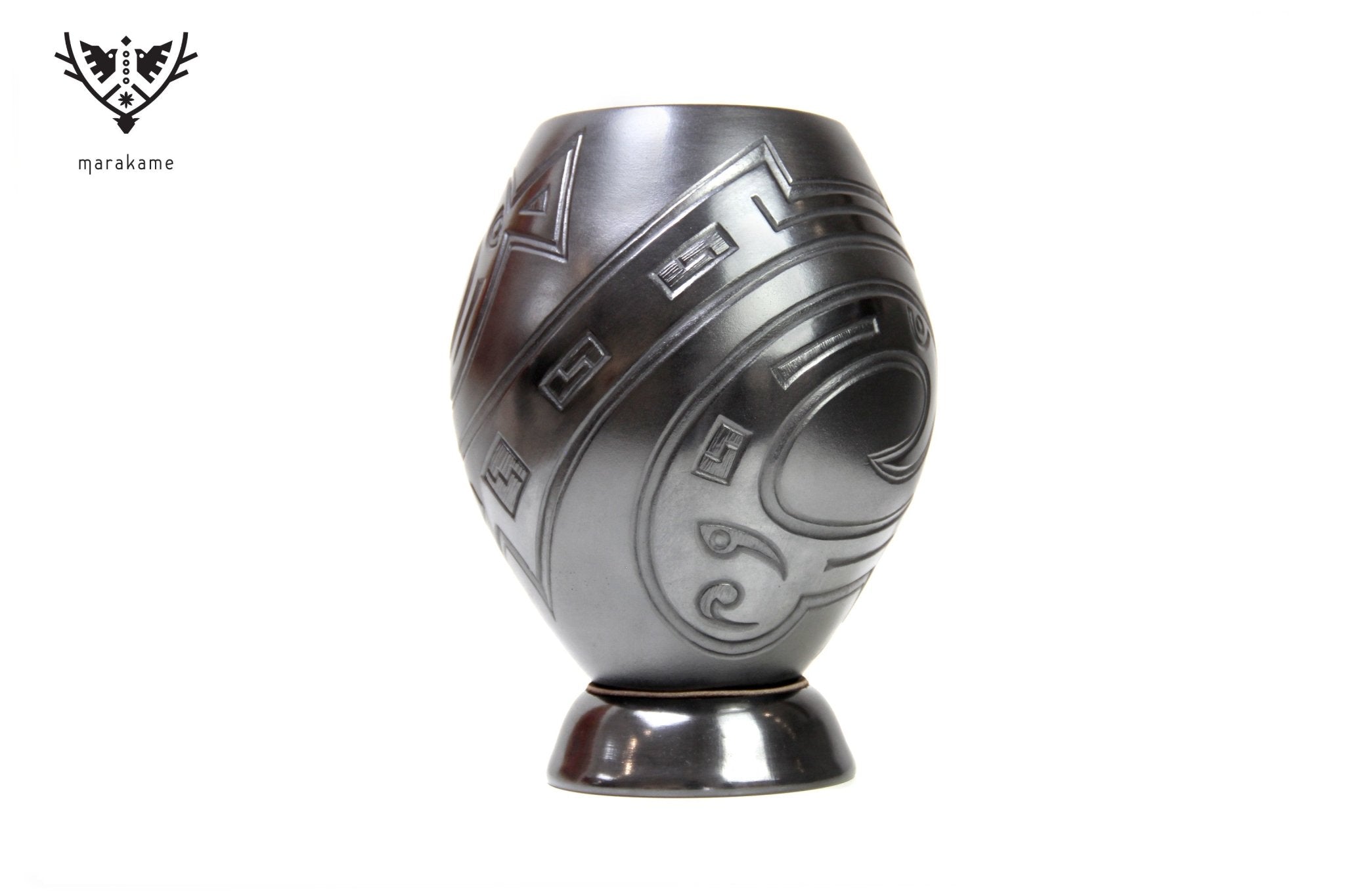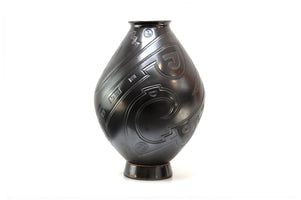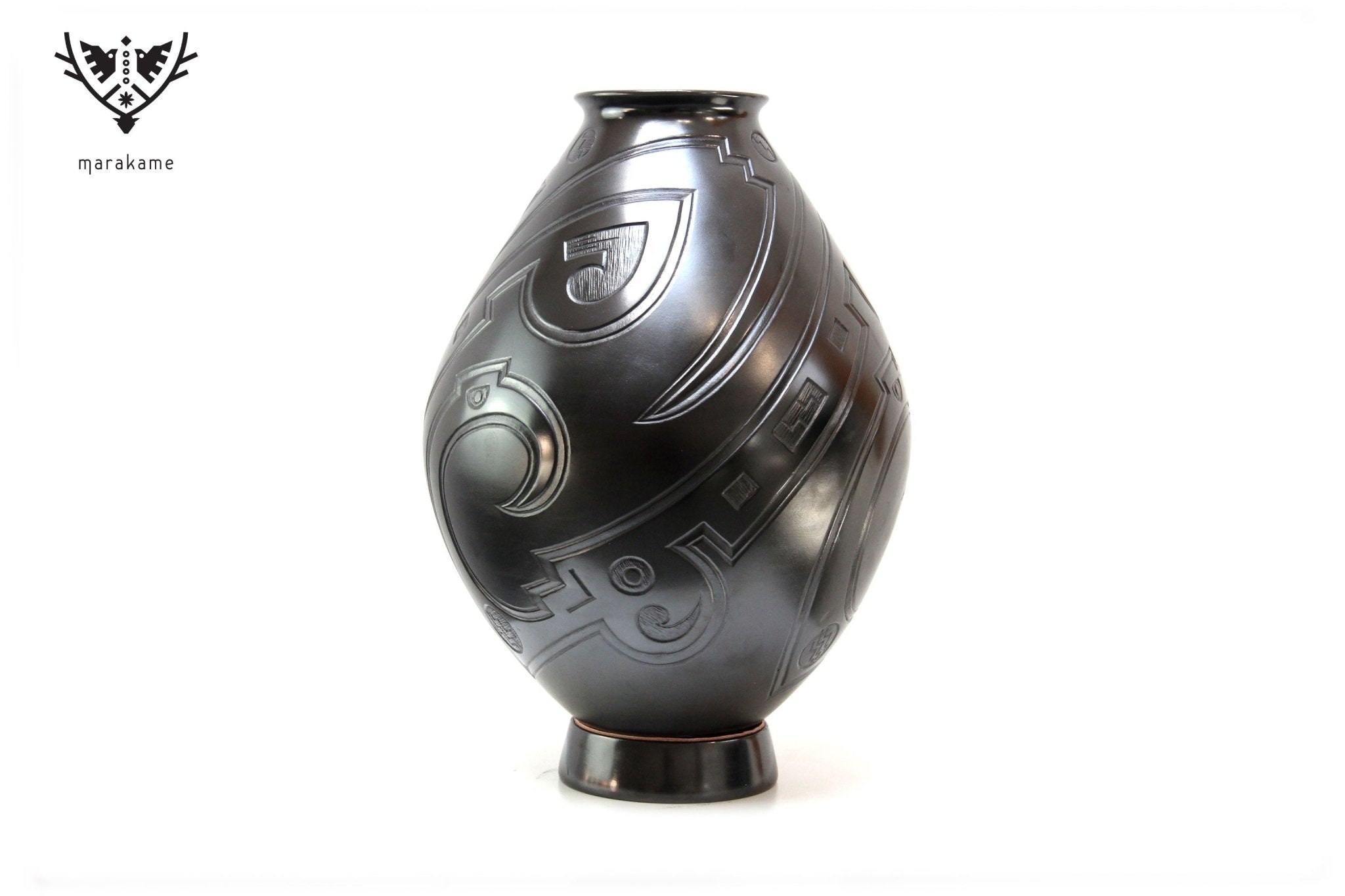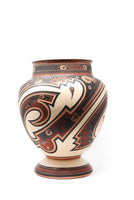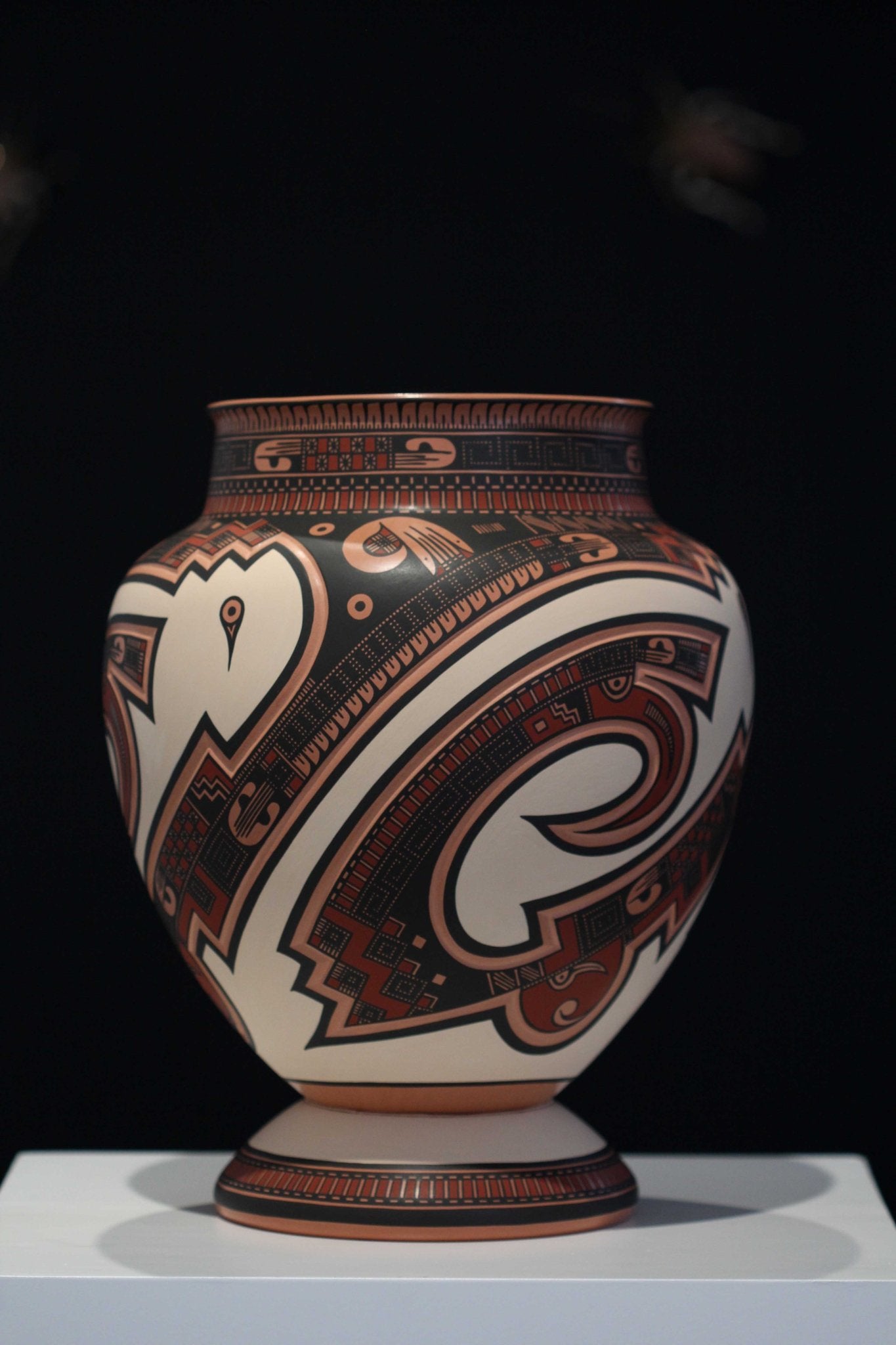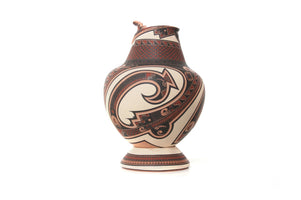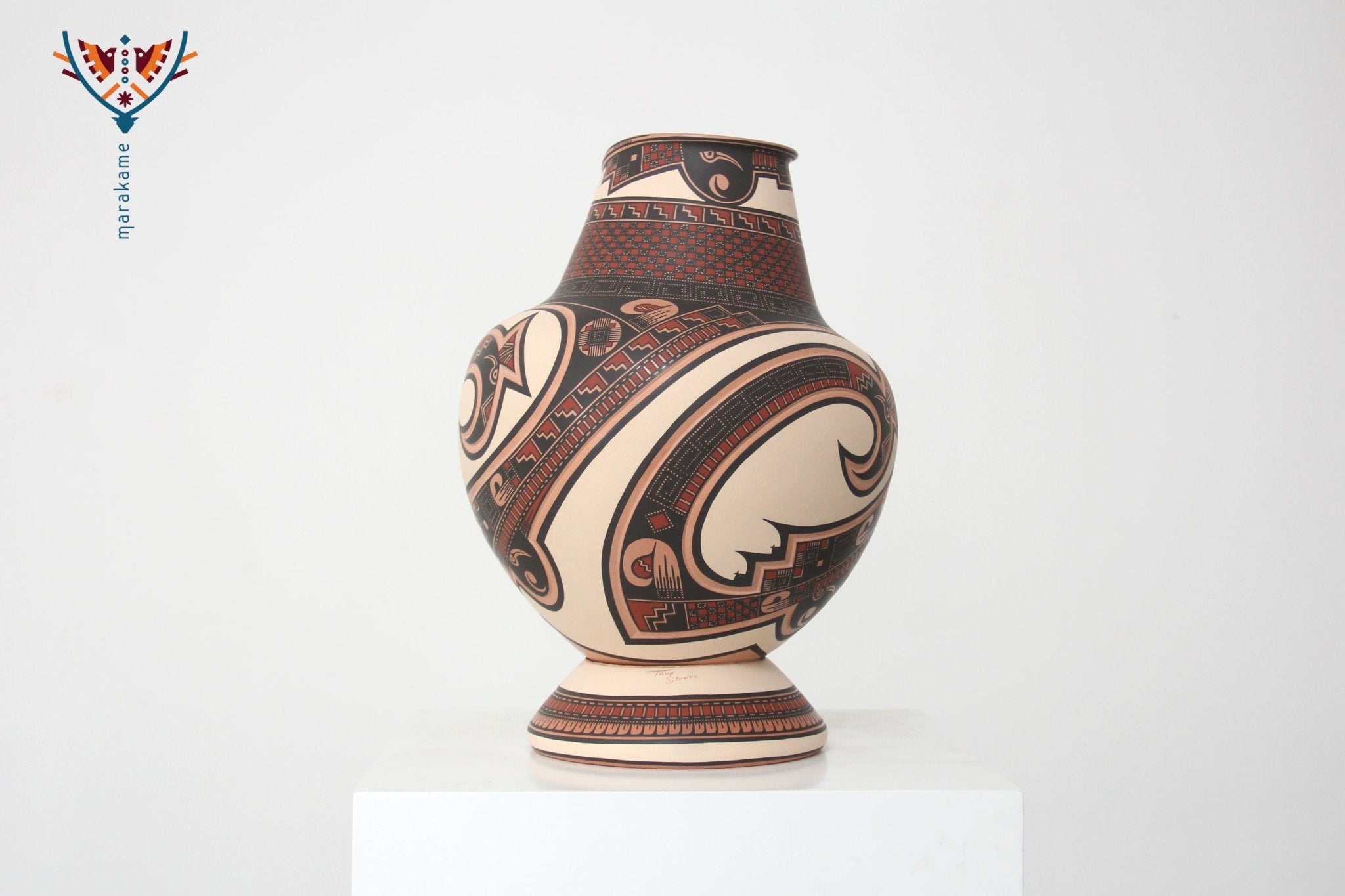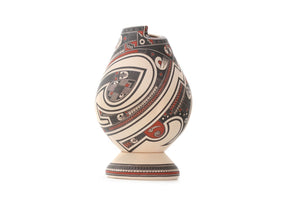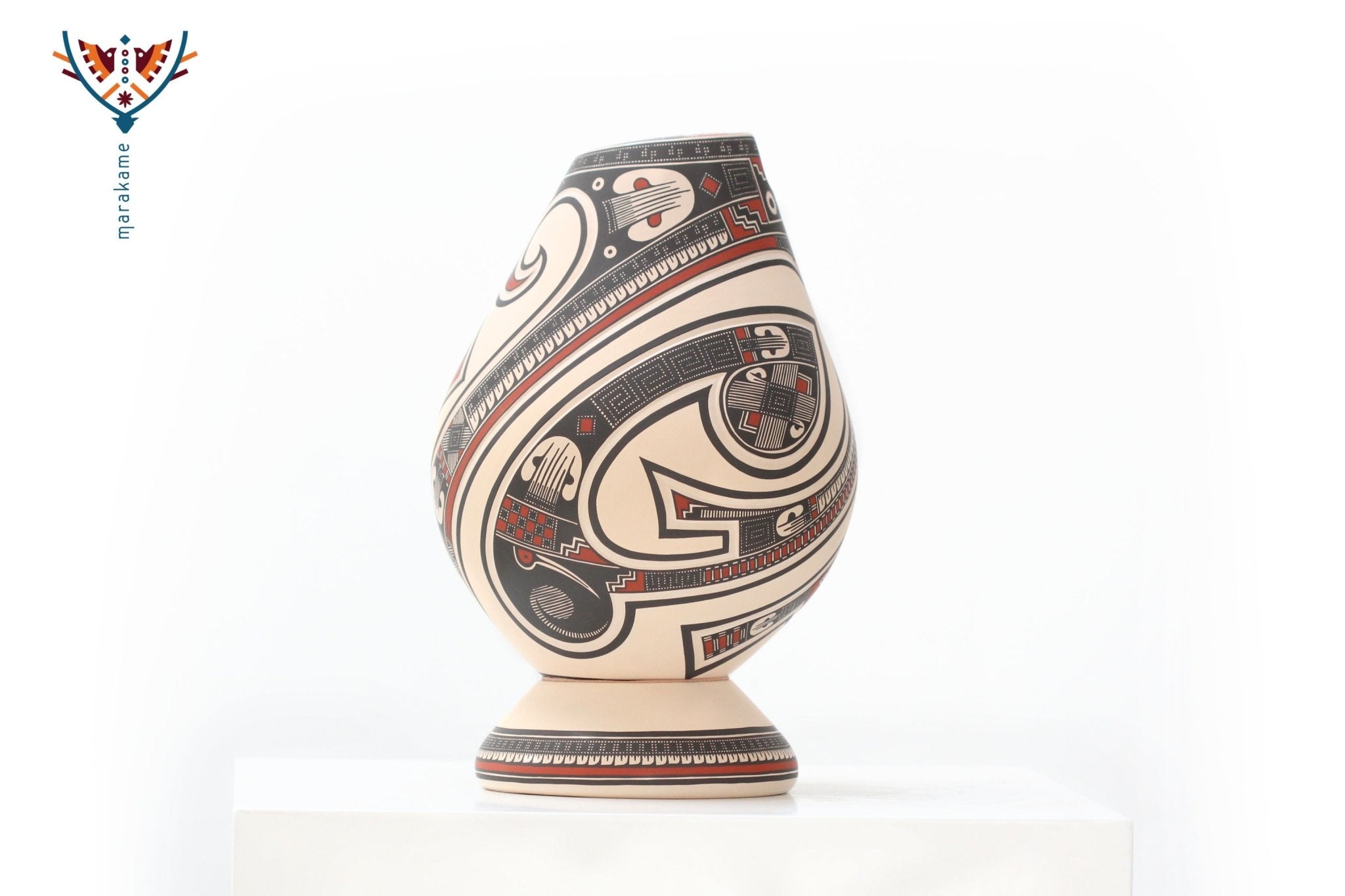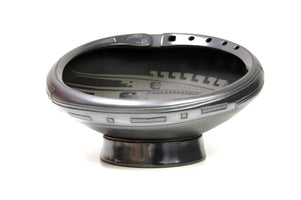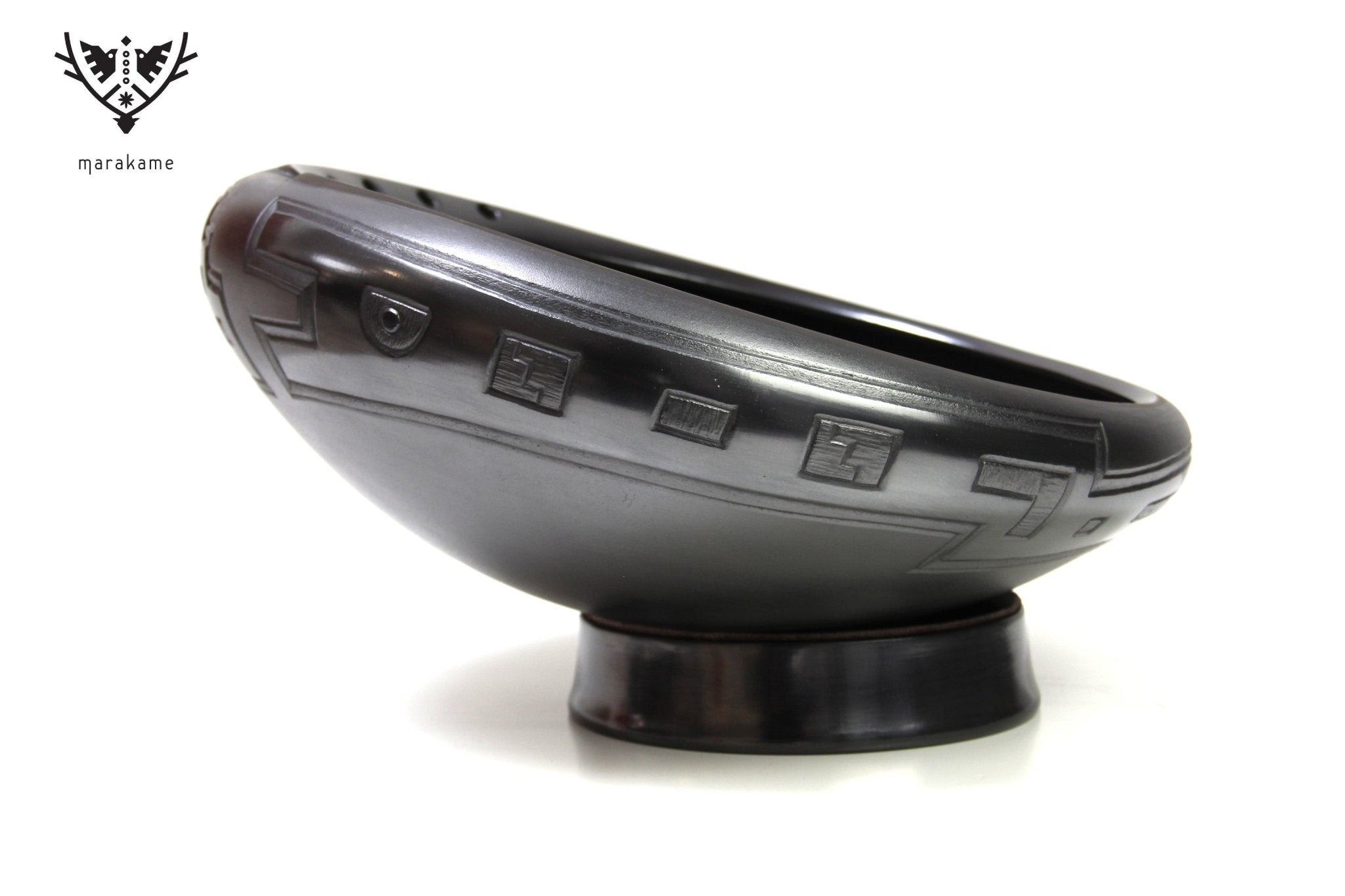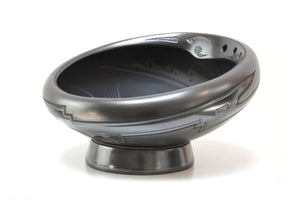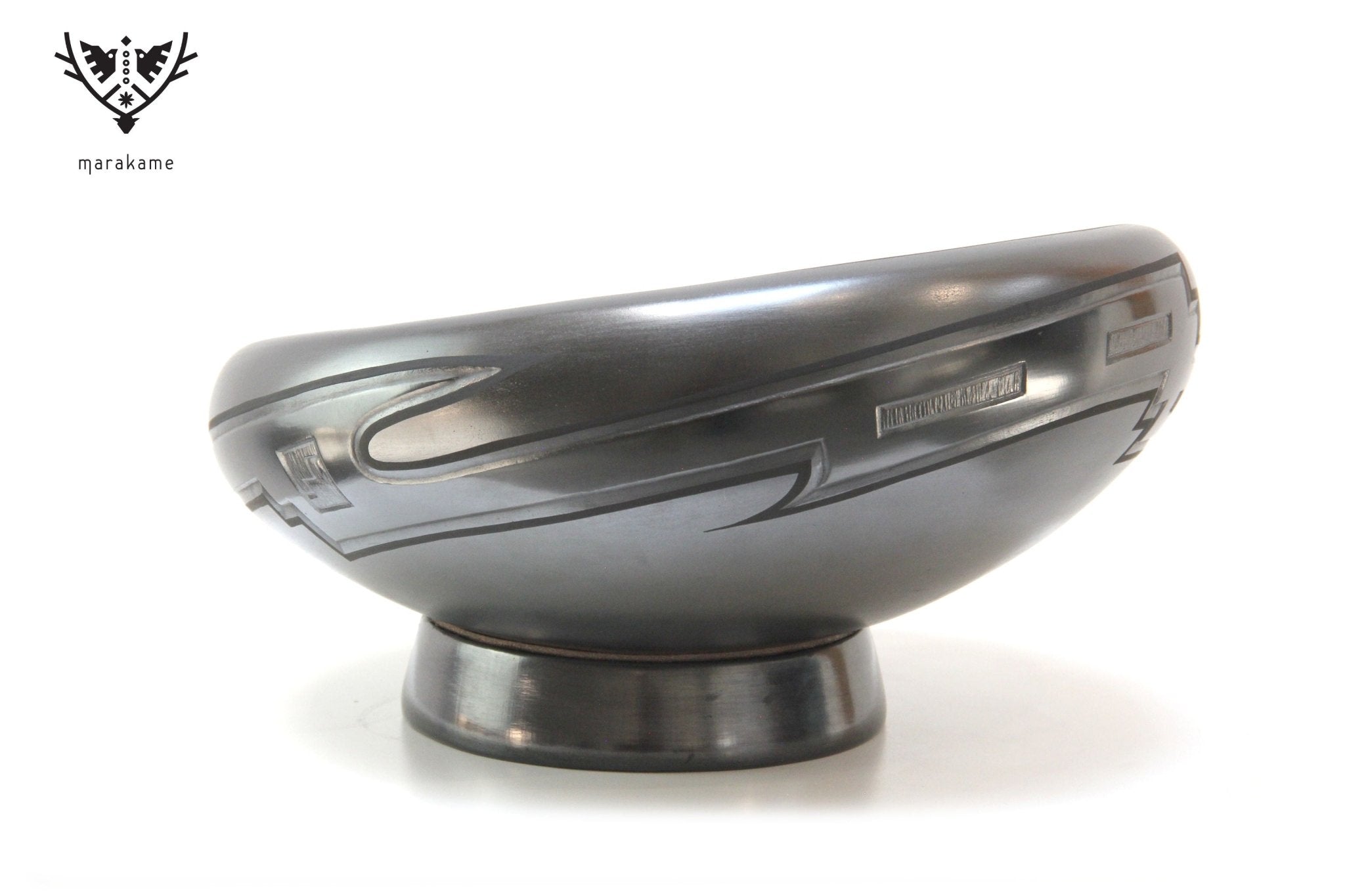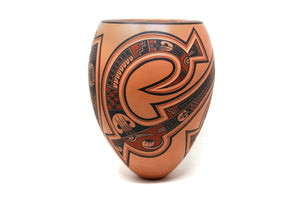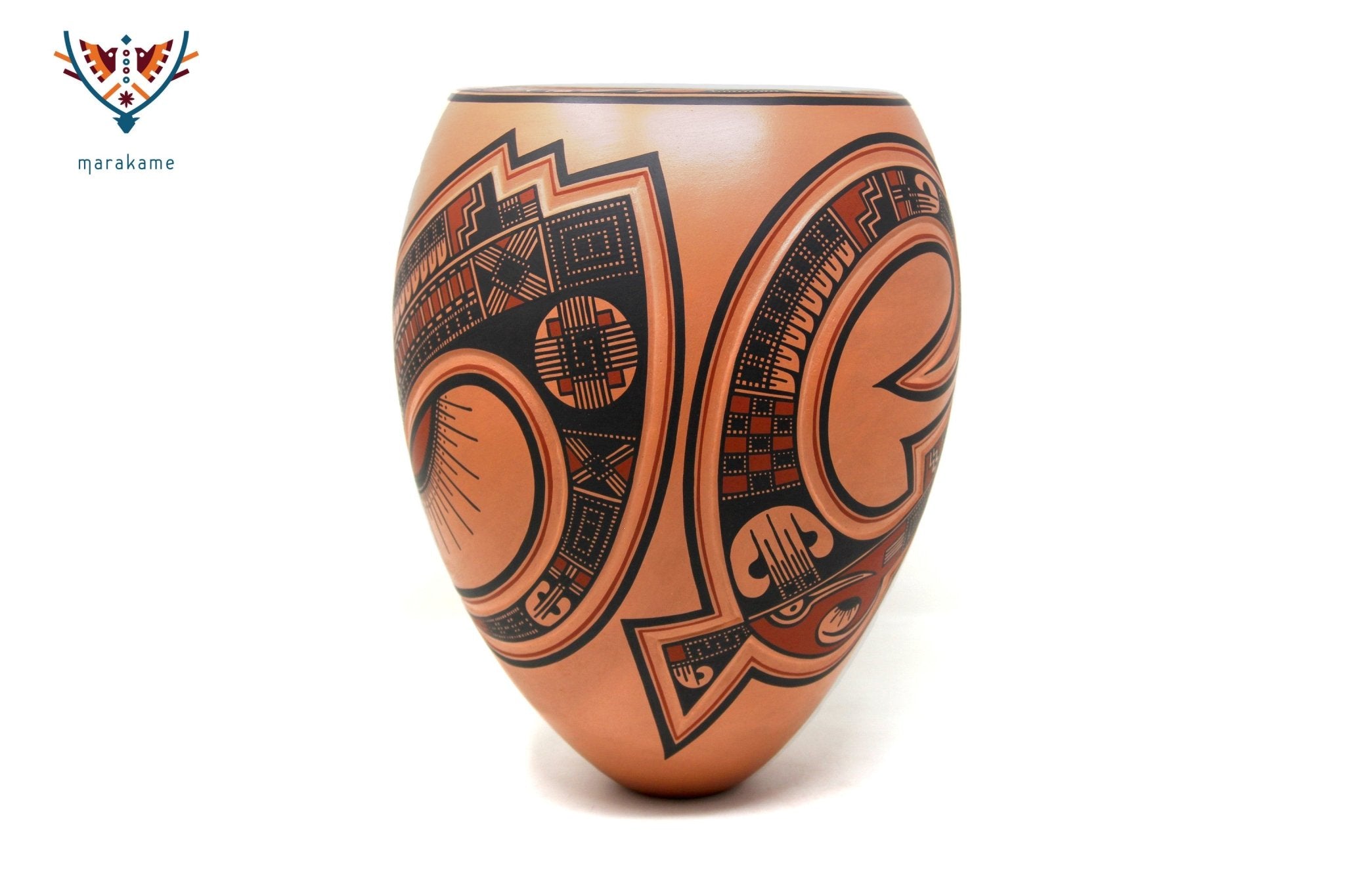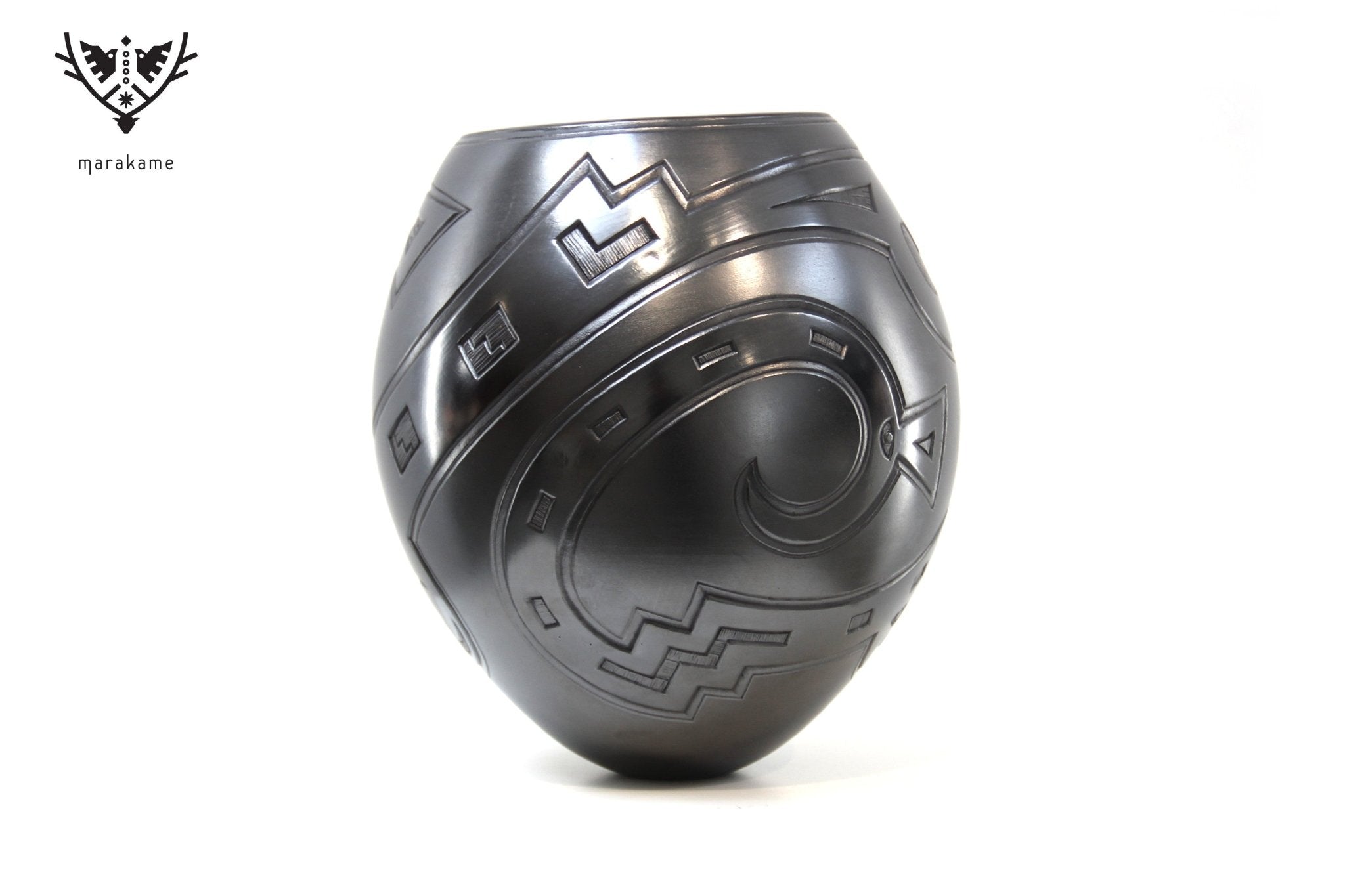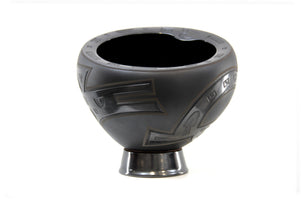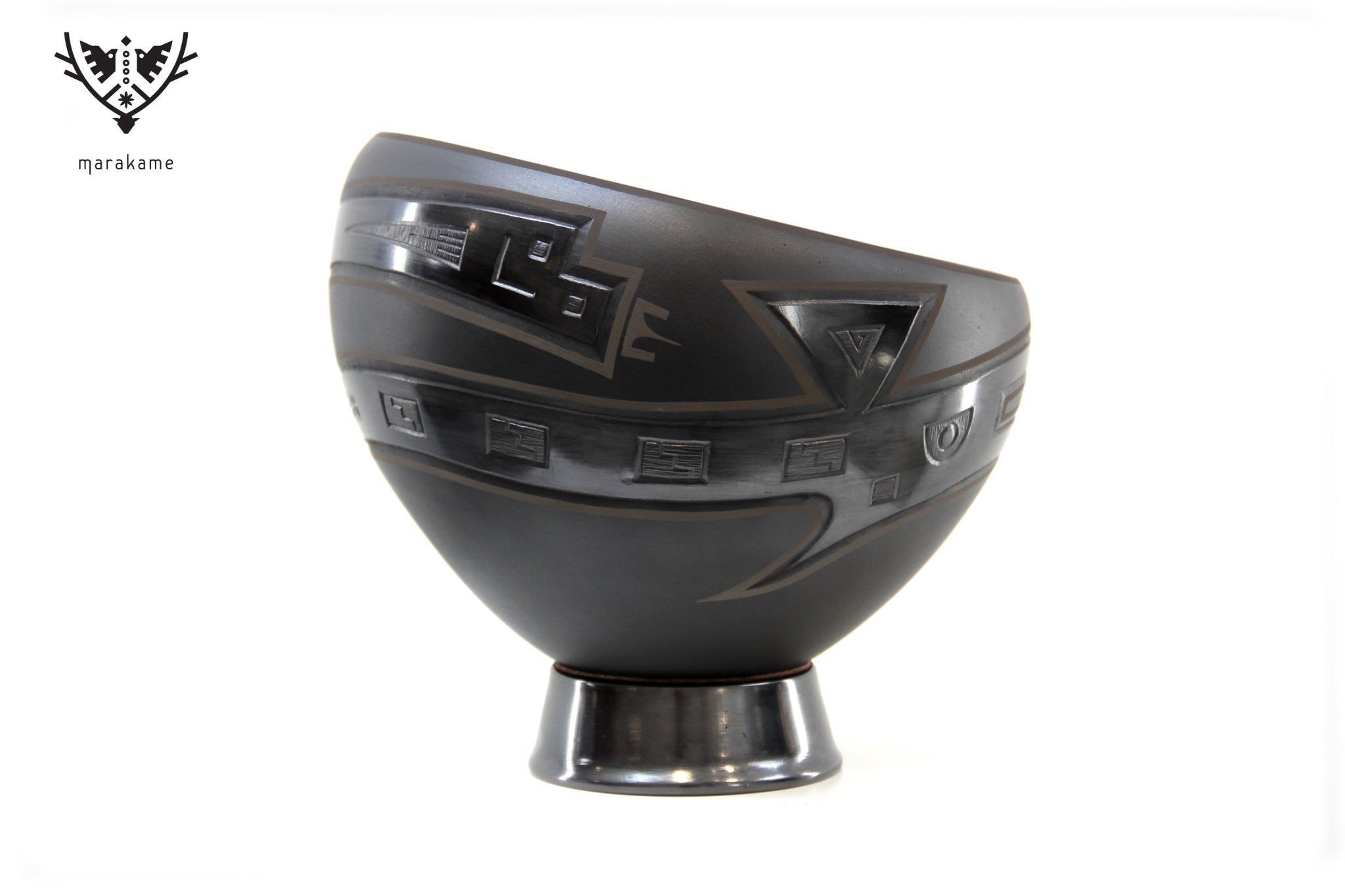Tavo Silveira

Tavo made a promise to his mother: that before she died he would be recognized as one of the most advanced ceramists in Mata Ortiz. Since then he began a career with many satisfactions, awards and artistic achievements, among them, extending the plastic and sculptural capabilities of the ceramic medium a little further.
Read more
In search of a distinctive seal, a quality with which to distinguish himself, he experimented with hollow and bulk sgraffito, enriching the surfaces of the pots, also incorporating delicate finishes and frequently accompanied with animal figures. Many of the tools he works with are self-made: with saws of different cuts and points he applies or extracts another volumetric dimension to the smooth walls of the clay. On these, he designs and paints symbols and paths that are nourished by the environment.
Great connoisseur of his territory, he recognizes the importance of the hills and areas that delimit the region: in Cerro del Indio is the mine from which they obtain manganese for black paint, Cerro Bola is at the foot of what is known as the Ranch White Clay (which belonged to Juan Quezada) and from which the light clay so used in pottery is obtained, from the slopes of Cerro del Caracol you obtain a yellow clay that after burning changes to red. Gray clay is that which is used for the pieces that will be black, when burned by reduction. In addition to the rivers (such as the Palanganas where people used to go fishing), appreciate the fauna that is still preserved. Bobcats, deer, black bears and many types of birds: white and gray herons, kingfishers, eagles and hawks. Just as he says: everything is around.
Their pictorial designs usually consist of one or two main figures that embrace the body of the pot and are called “paths of life”, referring above all to natural and wild life, and especially two elements: water (a vital activator and very principle of all ceramic process) and fire (last process in the creation of a piece, seals the surface and concludes all the work).


